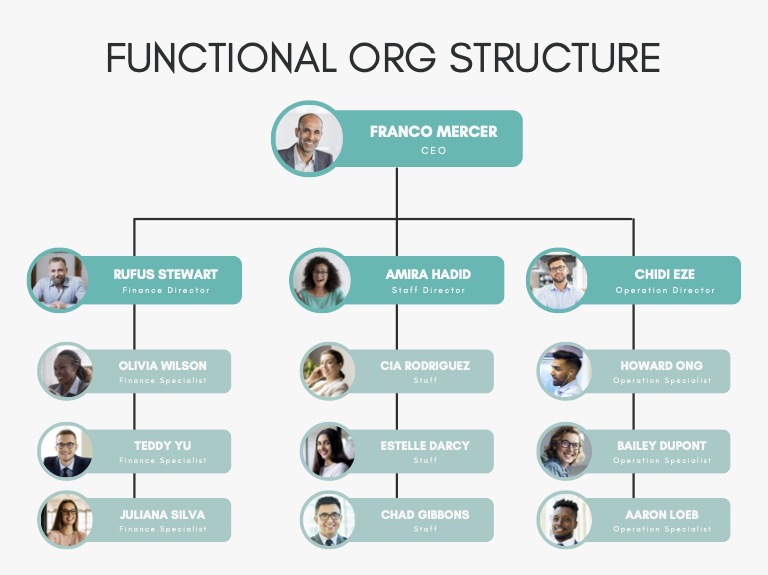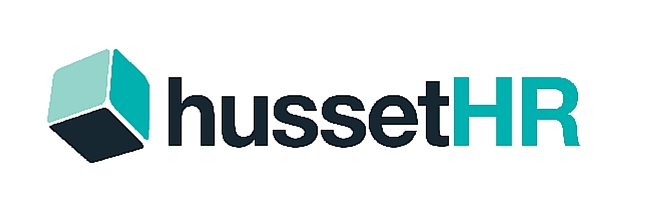What is an ‘Organisational Structure Chart’?
An organisational structure chart, sometimes known as an “org chart,” is a diagram that depicts a reporting or relationship hierarchy. The most common use of an org chart is to illustrate the structure of a company, government, or other organisation.
Org charts have a variety of uses and can be structured in several ways. They can serve as a management tool, a planning tool, or a personnel directory.
Types of ‘Org Charts‘
Let us introduce you to some org charts that are frequently used in businesses. Knowing the different types of organisational charts available will help you choose and implement the one that will work best for your company.
Mechanistic Organisational Structure
A mechanistic organisation has a high level of job specialisation, rigid departmentalisation, multiple levels of management (especially middle management), narrow spans of control, centralised decision-making, and a long chain of command.
Organic Organisational Structure
An organic organisational structure is a flexible workplace with a horizontal means of communication. Horizontal or flat communication strategies mean that employees share their responsibilities in groups and teams and work with multiple departments, bosses, and co-workers to get work done.
Functional Organisational Structure
A functional organisational structure is one that is utilised to arrange employees. They are organised into groups based on their individual abilities and knowledge. The entire organisational activity is separated into distinct functions such as operations, finance, marketing, and personnel relations. A functional specialist is assigned to each functional area.

Product-Based Divisional Structure
A product organisational structure is a framework in which a business is organised into several divisions, each of which focuses on a different product or service and functions as a separate unit inside the company.
Process-Based Structure
Process-based organisational structures are built on the end-to-end flow of various processes, such as “Research and Development,” “Customer Acquisition,” and “Order Fulfillment.”
Matrix Structure
A matrix structure is most common when individuals have more than one manager. For example, a company may have a team of sales reps who all report to a team leader. The sales reps are also working on other projects, which are most likely being managed by a separate project manager. The sales reps will have two managers in this case.
Circular Structure
Circular structures are hierarchical, but instead of a straight ladder or pyramid, they position high-level employees and leaders in the centre and inner rings of a circle and lower-level employees in the outer rings. This structure is meant to foster the spread of information and inspiration from the centre while also allowing other divisions to engage.
Flat Structure
Flat structures also deviate from typical hierarchies in favour of a more organic and detailed approach. Instead, they work to reduce the authoritative distance between functions and roles by restricting managerial levels. Management and executive staff with flat structures adopt a more collaborative rather than supervisory role, collaborating and interacting extensively with team members and project managers.
Network Structure
Network structures differ from other structures in that they are typically utilised when one organisation collaborates and shares resources with another. This might be two companies collaborating, or a large organisation with numerous divisions situated in different locations, each with its own leadership and procedures.
Are Org Charts still relevant? Or are they dead?
The era of the organisation chart began in 1854 when Daniel McCallum began drafting them for the railways he managed. The technique was quite useful in an age of strict command-and-control hierarchical management practises and very restricted internal communication channels, mostly paper or face-to-face.
Since then, technology, communication methods, and business practises have evolved considerably. While the formal org chart’s value has declined, the requirement to find and identify the individual accountable for a specific task has increased. The need to understand decision-making and form cross-functional teams for problem solving and innovation has also increased dramatically.
At hussetHR, we believe that all businesses, even those with a horizontal structure, require a hierarchical organisational chart. It is, without a doubt, a foundational document from which all procedures flow.
Claire Waller, HR Advisor at hussetHR says, “Org charts are still very pertinent to businesses in today’s market. Businesses tend to fail when they a) are not using a chart relevant to their company and b) not keeping their chart up-to-date with changes that happen within the organisation. Businesses will see the best results using an org chat that is live, editable, and stored in a companywide shared network. This allows changes to be made easily and creates transparency amongst all employees.”
The pros & cons of using an Org Chart
Pros
Each employee can see their role within the framework of the entire organisation. This can be highly beneficial for onboarding new employees as well as managing projects and staff changes.
The following points are some advantages of using an organisational structure chart in your company:
- A goldmine of information can be found in an organisational chart. It enables employees to rapidly view each name and job title, as well as reporting relationships, by looking at a visual diagram.
- Some businesses include contact information in their organisational charts. If an employee consults the chart to learn the reporting structure, they will have the information they need to communicate with the appropriate person.
- New employees can know where they fit within the business and the chain of command can concentrate on learning their role.
- It promotes better communication and collaboration. Teams that are no longer physically together may struggle to collaborate successfully. Resilient businesses have implemented smart technology and developed new processes to collaborate during pandemic-induced disruption. A digital org chart that employees and department managers can access 24 hours a day, seven days a week is essential, especially for firms that use virtual teams.
- A well-managed organisational chart aids in visualising individual workloads. This is especially beneficial for managers’ workloads because it is evident how many people they are overseeing and, in some situations, how many departments are under them.
- It makes future planning easier because you can visualise the framework. You can effectively deploy resources, easily identify capabilities, and much more.
Cons
Although we believe that the benefits of an organisational structure chart far outweigh the disadvantages, the following limitations should be considered when creating one for your business:
- One of the most significant disadvantages of an organisational chart is the absence of informal channels. Organisation charts do not capture all communication routes because they are not all formal and well-defined. Although org charts are not intended to capture them, informal channels are important in any organisation or business, and neglecting to record them may hinder communication.
- An out-of-date organisational chart is almost useless. However, keeping information up to date is quite difficult, especially for large enterprises. Employees may switch departments, leave the organisation, be allocated a new function, and so on in a short period of time. Because it is difficult to keep track of these changes adequately, keeping an org chart will take time.
HussetHR Services
At hussetHR, our HR services can help you create and manage an in-depth organisational structure chart for your business. The advantages of outsourcing HR tasks like these go beyond design and implementation. We can make sure that your organisational chart is always up to date and functioning correctly by using our cutting-edge HR software, ensuring that it enhances employee performance against a benchmarked level and knowing exactly where to focus on training and support.
When determining the optimal solution for your company, it is advisable to get experienced HR advice. hussetHR is always available via phone or email and ready to advise you on the best course of action.
Call us today at 1300 487 738

